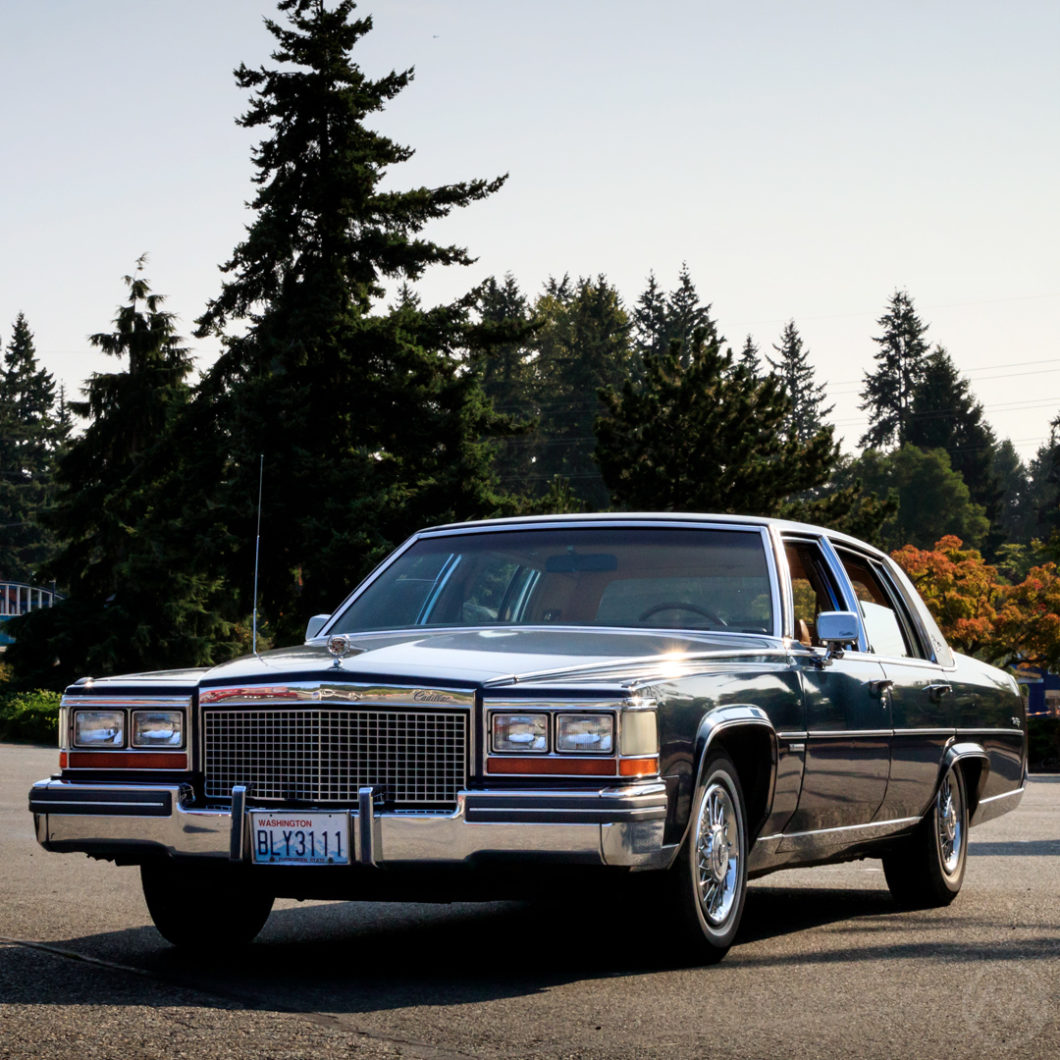The excellent downsized GM full-sizes of 1977 were reworked with a more formal look in the late fall of 1979 as 1980 models. The more upright looks belied better aerodynamics which, in some cases, yielded a 5% boost in mpg, and in the fall of 1979 MPG was what mattered.
Two successive fuel crises and the creation of Corporate Average Fuel Economy rules made for many unusual solutions in the late 1970s and early 1980s – some of which the technology of the day just couldn’t make work. No engine symbolizes this more than Cadillac’s 1981 V-8-6-4 – but before you get upset over criticism of this engine, read on.
Cadillac’s first step towards getting reasonable CAFE numbers was to add Oldsmobile 350 V8s in certain cars, and next came Olds’ LF9 diesel V8, which gave really impressive numbers but eventually proved to be more trouble than it was worth.
But the division wanted its own solution. To create one, it first downsized the corporate big-block V8 from 425 to 368-cid (6-liters) for 1980.
Four-Six-Eight
For 1981 Cadillac worked with supplier Eaton to develop a unique cylinder deactivation system. Under load, the car would operate with 8 cylinders, but when loads were light, in highway cruising or heavy traffic, the engine operated as a six or a four, with the dormant cylinders’ valves deactivated.
Two giant electrical connectors on each set of valves (the valve covers are skyscraper-tall) kept the system operating, and everything, including the car’s standard fuel injection, was computer controlled, with an early OBD system to tell mechanics about any problems.
Almost all the instrumentation was digital, and the OBD system interfaced through the HVAC controls.
Eaton’s computer, unfortunately, couldn’t keep up with real world conditions.
The system was endlessly problematic and within a year or two, most V-8-6-4s had had their cylinder deactivation modes disabled – which considering the complexity of the system, is actualy very easy to deactivate.
Turning it off defeated the MPG purpose, but without the system, the 368 V8 was actually a very solid powerplant – especially compared to its 4.1L HT4100 replacement that arrived the following year.
Customers were not always happy, however, since this wasn’t what Cadillac promised, and these high-profile issues struck as Cadillac diesel owners also encountered trouble. Many of the issues with these engines were later sorted by collectors, but they seriously stung Cadillac’s reputation.
Staying Traditional
To drive, however, these cars had all the traditional Cadillac virtues – they were comfy, luxurious looking and feeling, and packed with power accessories and features.
At the top of the traditional Cadillac lineup was the Fleetwood Brougham. Though it played to a traditional crowd, the Brougham was a decent handler for its size and purpose -which was generally being a relaxed cruiser.
Younger buyers after a BMW or Mercedes experience generally shunned these cars by the late 1980s, but they were still good sellers – with sales rising about 10% in 1981 and the 4-door Brougham/DeVille staying strong well into the late eighties.
By then front-drive Cadillac DeVilles and Fleetwoods had arrived and the model name was shortened to the better-known-today “Brougham.”
Labels aside, what became the #Brougham remained cosmetically almost totally unchanged from 1980 to 1989, so it’s hard to tell the models apart from a distance, but the ’81 is unique for its badges and for the deactivation system – an idea technology later did make work, but only once computing power had caught up.
Ben R.’s Twilight Blue ’81 was seen at Cars and Coffee Seattle. Younger buyers deserted Cadillac in the 1980s but these are great old cruising cars, so it’s always nice to see them out.

